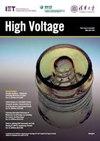Space Charge and Breakdown Properties of PP-Based Insulation Interface in Extrusion Molded Joint for HVDC Submarine Cables
IF 4.9
2区 工程技术
Q1 ENGINEERING, ELECTRICAL & ELECTRONIC
引用次数: 0
Abstract
This paper focuses on the space charge and breakdown characteristics of polypropylene (PP)-based insulation interface in extrusion moulded joint (EMJ) for high-voltage direct current (HVDC) submarine cables. The double-layered flat samples and cylindrical samples are prepared to imitate the interface in the PP-insulated EMJ. The DC conductivity, space charge, and breakdown strength are tested. The results demonstrate that in the EMJ manufacturing process, the lower wielding temperature leads to microdefects at the insulation interface. As shallow traps, the microdefects exacerbate hetero charge accumulation, thereby intensifying the electric field distortion and increasing the conductivity. Meanwhile, the interfacial microdefects lead to a reduction in the insulation breakdown strength. At 90°C, the normal and tangential breakdown strengths decrease by a maximum of 20.6% and 54.5%, respectively. Notably, the space charges and microdefects lead to a rapid decline in the breakdown strength after hetero polarity pre-stressing. Especially for the tangential breakdown strength, the maximum decrease rate reaches 22.9%. Therefore, the interfacial microdefects caused by the drop in the welding temperature are the primary factors leading to a serious decrease in the electrical properties of EMJ insulation, making the EMJ insulation weaker than PP cable insulation.高压直流海底电缆挤压成型接头中pp基绝缘界面的空间电荷和击穿特性
研究了高压直流海底电缆挤压成型接头(EMJ)中聚丙烯基绝缘界面的空间电荷和击穿特性。制备了双层平面样品和圆柱形样品来模拟pp绝缘EMJ中的界面。测试了直流电导率、空间电荷和击穿强度。结果表明,在EMJ的制造过程中,较低的摆动温度会导致绝缘界面处的微缺陷。微缺陷作为浅阱,加剧了异质电荷的积累,从而加剧了电场畸变,提高了电导率。同时,界面微缺陷导致绝缘击穿强度降低。在90℃时,法向击穿强度和切向击穿强度分别下降20.6%和54.5%。空间电荷和微缺陷的存在导致材料在异极性预应力后击穿强度迅速下降。特别是切向击穿强度,最大降低率达到22.9%。因此,焊接温度下降导致的界面微缺陷是导致EMJ绝缘电性能严重下降的主要因素,使EMJ绝缘弱于PP电缆绝缘。
本文章由计算机程序翻译,如有差异,请以英文原文为准。
求助全文
约1分钟内获得全文
求助全文
来源期刊

High Voltage
Energy-Energy Engineering and Power Technology
CiteScore
9.60
自引率
27.30%
发文量
97
审稿时长
21 weeks
期刊介绍:
High Voltage aims to attract original research papers and review articles. The scope covers high-voltage power engineering and high voltage applications, including experimental, computational (including simulation and modelling) and theoretical studies, which include:
Electrical Insulation
● Outdoor, indoor, solid, liquid and gas insulation
● Transient voltages and overvoltage protection
● Nano-dielectrics and new insulation materials
● Condition monitoring and maintenance
Discharge and plasmas, pulsed power
● Electrical discharge, plasma generation and applications
● Interactions of plasma with surfaces
● Pulsed power science and technology
High-field effects
● Computation, measurements of Intensive Electromagnetic Field
● Electromagnetic compatibility
● Biomedical effects
● Environmental effects and protection
High Voltage Engineering
● Design problems, testing and measuring techniques
● Equipment development and asset management
● Smart Grid, live line working
● AC/DC power electronics
● UHV power transmission
Special Issues. Call for papers:
Interface Charging Phenomena for Dielectric Materials - https://digital-library.theiet.org/files/HVE_CFP_ICP.pdf
Emerging Materials For High Voltage Applications - https://digital-library.theiet.org/files/HVE_CFP_EMHVA.pdf
 求助内容:
求助内容: 应助结果提醒方式:
应助结果提醒方式:


